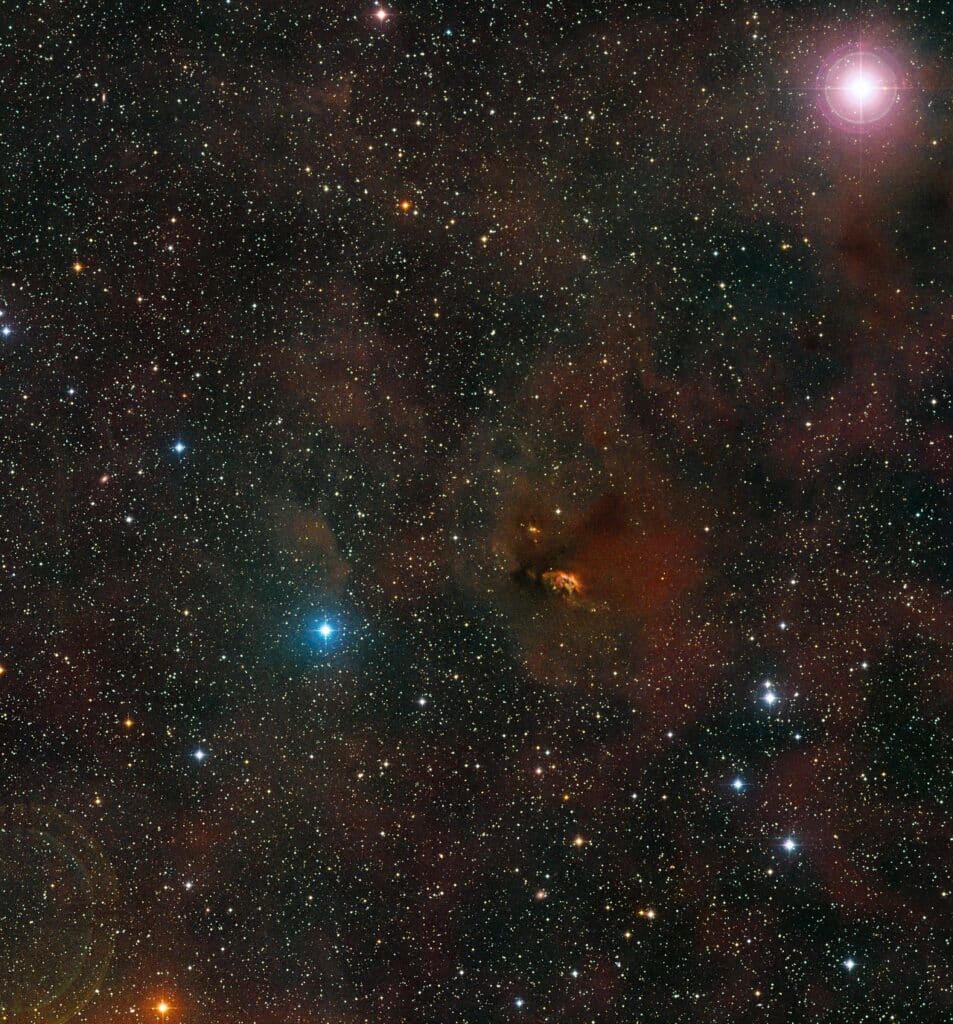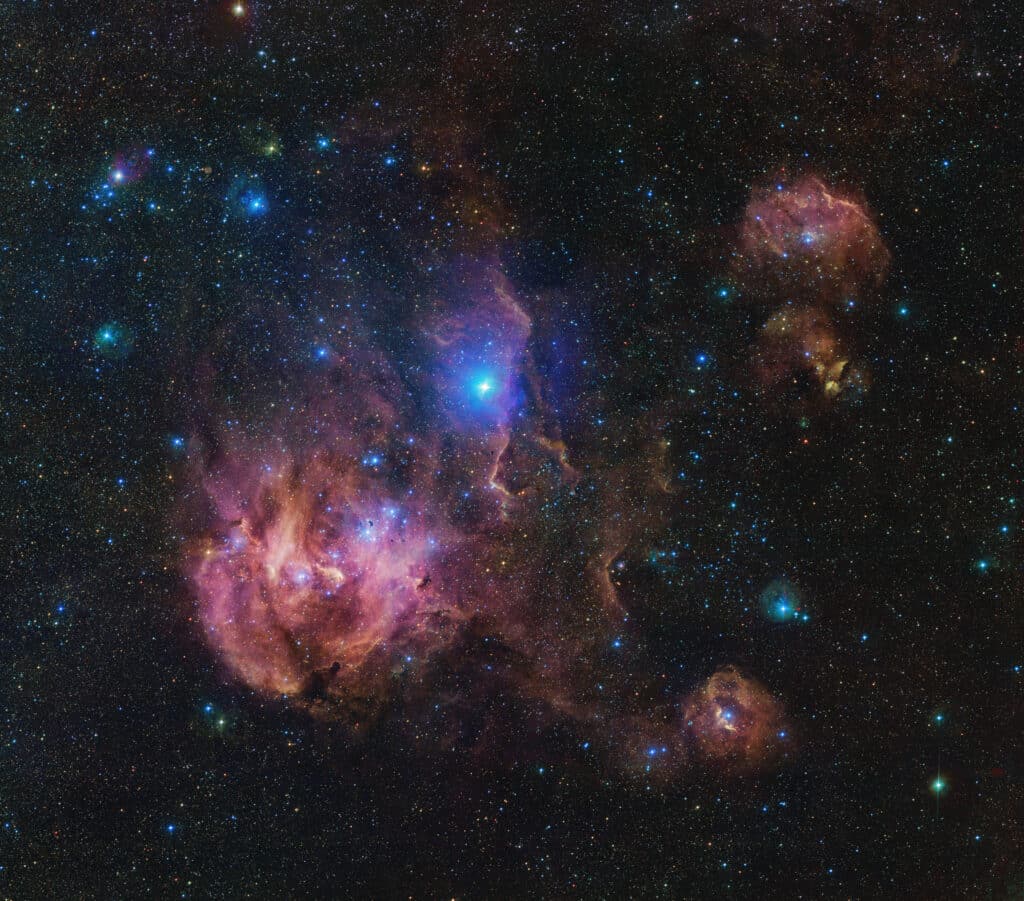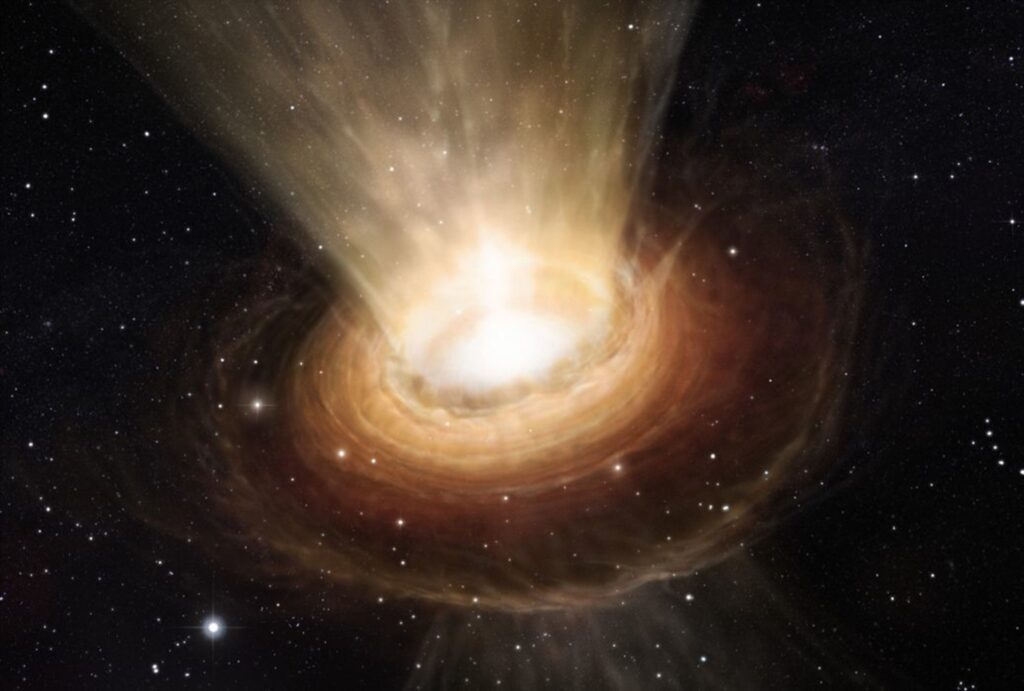NASA’s James Webb Space Telescope (JWST) has made an astronomical discovery — capturing images of winds emanating from an ancient planet-forming disk for the very first time. This remarkable achievement not only provides critical insights into the process of planet formation but also marks a significant advancement in our understanding of the lifecycle of circumstellar disks — the rings of gas and dust surrounding young stars where planets are born.
The focus of this pioneering research is a young star named TCha, encircled by a disk that, although ancient in astronomical terms, is still in its planet-forming phase. This disk is distinguished by a substantial dust gap extending to about 30 astronomical units from the star — an astronomical unit being the average distance between the Earth and the Sun. For the first time, scientists have observed the dispersing gas, or winds, from this disk, a crucial phase in the disk’s evolution, as it signifies the end of the period during which planets can form by accumulating gas from their surroundings.

“These winds could be driven either by high-energy stellar photons (the star’s light) or by the magnetic field that weaves the planet-forming disk,” says study lead author Naman Bajaj, graduate student at the University of Arizona, in a media release.
The observations utilized in this discovery were made possible by JWST’s ability to image the winds using the light from noble gases neon (Ne) and argon (Ar), with one of the gases detected in a planet-forming disk for the first time.
The study’s revelations are critical to understanding when the gas within these disks disperses, a factor that limits the timeframe for planets to form. This dispersal process is vital because it dictates the composition of the resulting planetary system, which, like our Solar System, tends to contain more rocky bodies than gas giants.
Dr. Uma Gorti from the SETI Institute, who has extensively researched disk dispersal, expressed her excitement about the findings, highlighting the opportunity to “finally be able to disentangle the physical conditions in the wind to understand how they launch.” Researchers conducted simulations and compared them to their observations to differentiate the potential causes of the wind, concluding that stellar photons could indeed explain the observed gas dispersal.
A companion paper, currently under review, promises to detail these results further, including the startling calculation that the mass being lost from the disk each year is equivalent to that of the Moon. This discovery builds upon previous work using the Spitzer Space Telescope and marks a significant leap forward, with JWST’s data allowing for an unprecedentedly detailed examination of the disk winds.
“We first used neon to study planet-forming disks more than a decade ago, testing our computational simulations against data from Spitzer, and new observations we obtained with the ESO VLT,” explains Richard Alexander, professor at the University of Leicester School of Physics and Astronomy. “We learned a lot, but those observations didn’t allow us to measure how much mass the disks were losing. The new JWST data are spectacular, and being able to resolve disk winds in images is something I never thought would be possible. With more observations like this still to come, JWST will enable us to understand young planetary systems as never before.”

Additionally, the team has observed that the inner disk of TCha is evolving rapidly, with notable changes detected within a span of just 17 years. This rapid evolution suggests that we might witness the complete dispersal of the dust in TCha’s inner disk within our lifetimes, offering a unique opportunity to observe a critical phase in the life cycle of a planet-forming disk.
The findings from this research underscore the incredible capabilities of the JWST in advancing our understanding of the universe. By shedding light on the processes that lead to the formation of planets, these observations provide invaluable insights into the conditions necessary for the birth of new worlds and offer a glimpse into the early stages of planetary systems, potentially including our own.
The study is published in The Astronomical Journal.













Comments